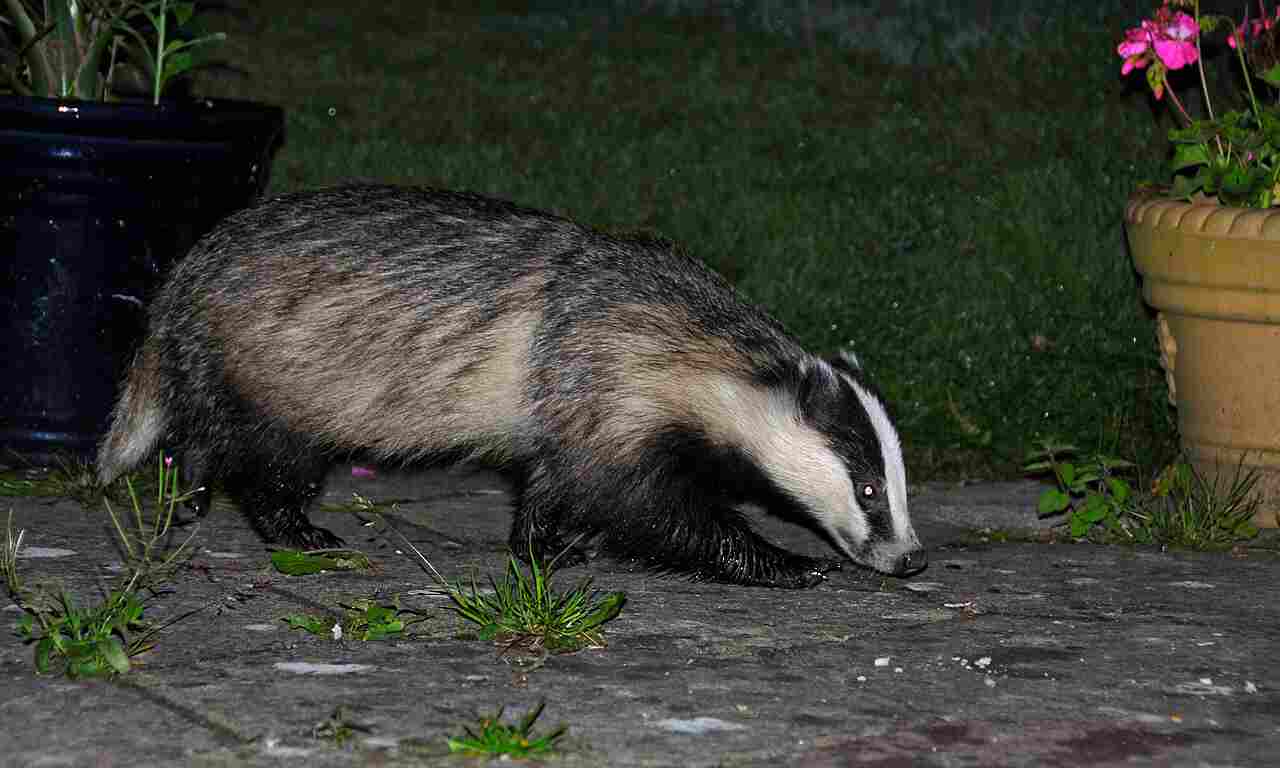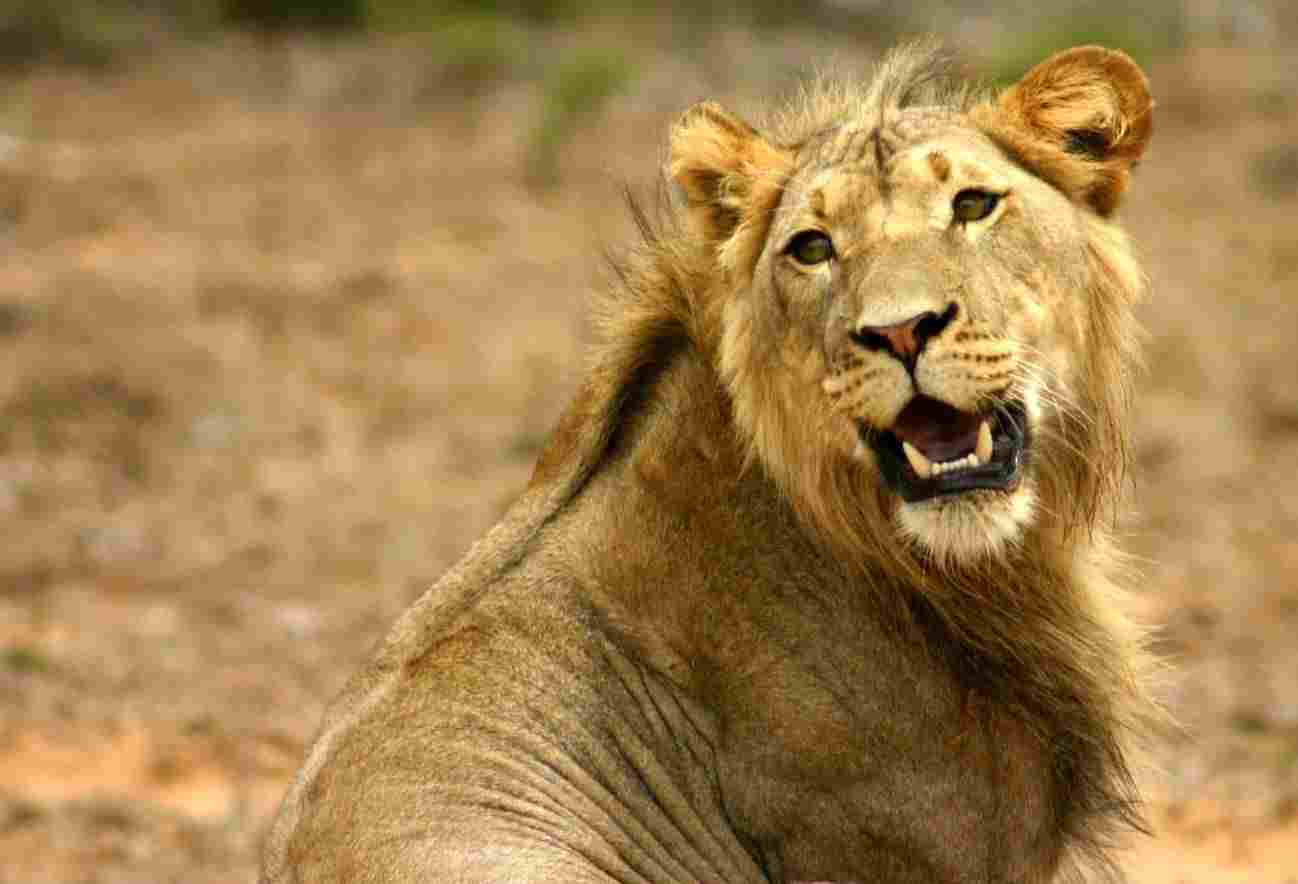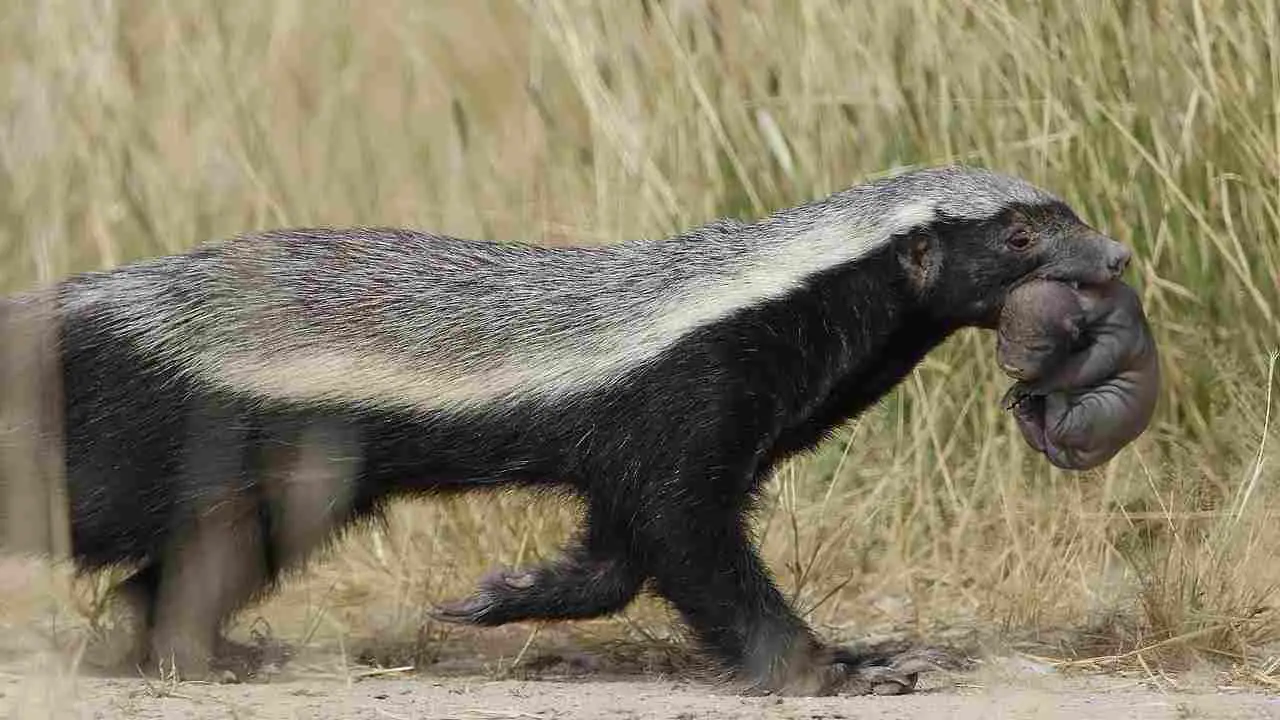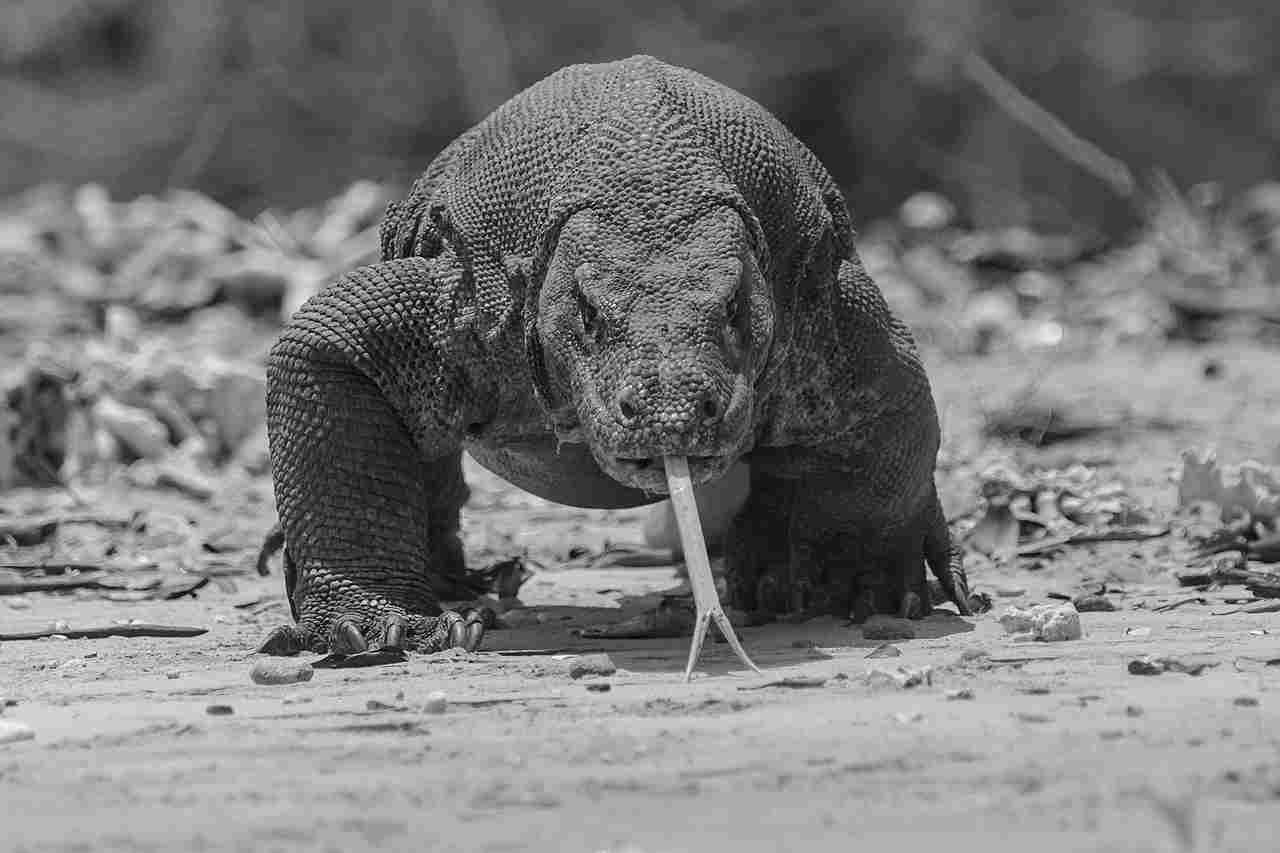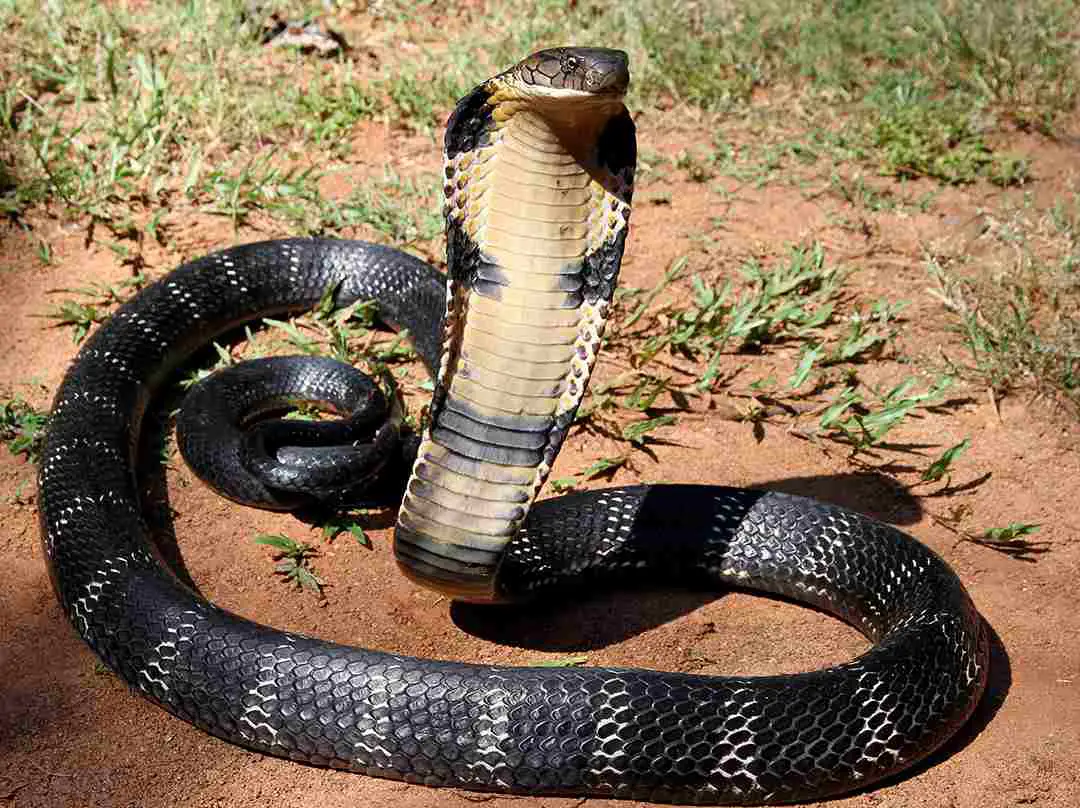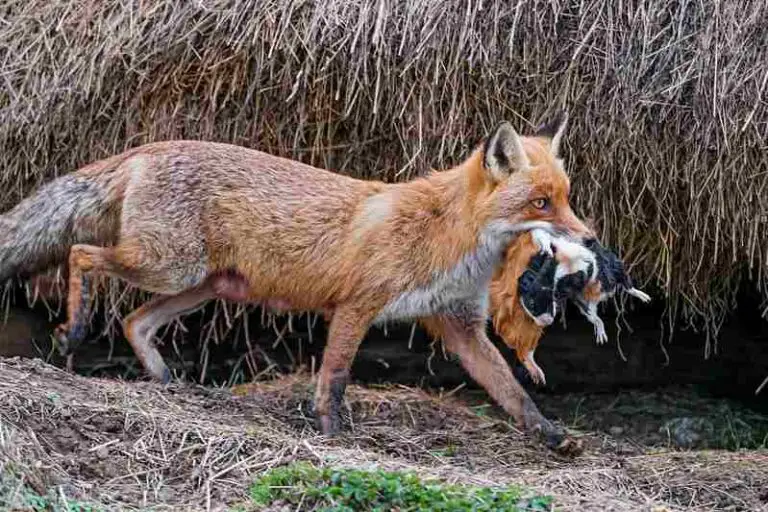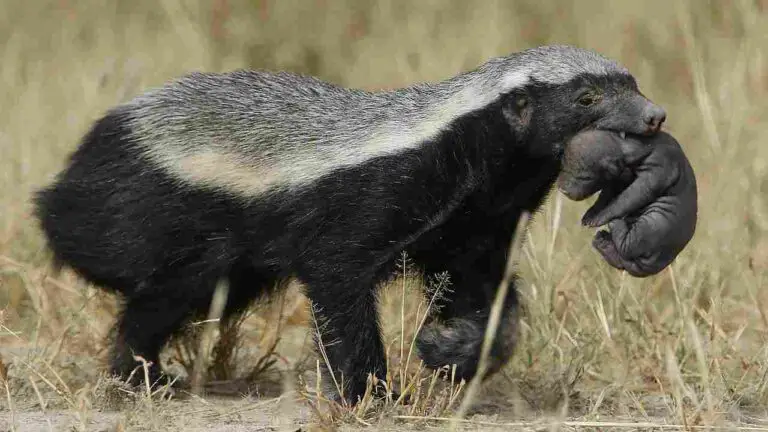Honey badger Vs Leopard Who Would Win, and Overall Comparison
A honey badger, known for its remarkable aggressiveness, faces off against a leopard in a fight or physical confrontation due to their contrasting attributes. This analysis explores their taxonomy, appearance, size, weight, agility, aggressiveness, and predatory features to speculate on the potential outcome of a one-on-one clash between these two predators.
Honey Badger vs Leopard: Assessing the Likely Victor in a Confrontation
A honey badger, despite its formidable aggressiveness, is likely to succumb to a leopard in a fight due to the leopard’s significantly larger size, greater weight, superior speed, agility, and prowess as a predator.
I). Size and Weight Advantage:
– The leopard holds a substantial advantage in both size and weight over the honey badger. This physical superiority contributes to the leopard’s overall strength, potentially allowing it to dominate the confrontation.
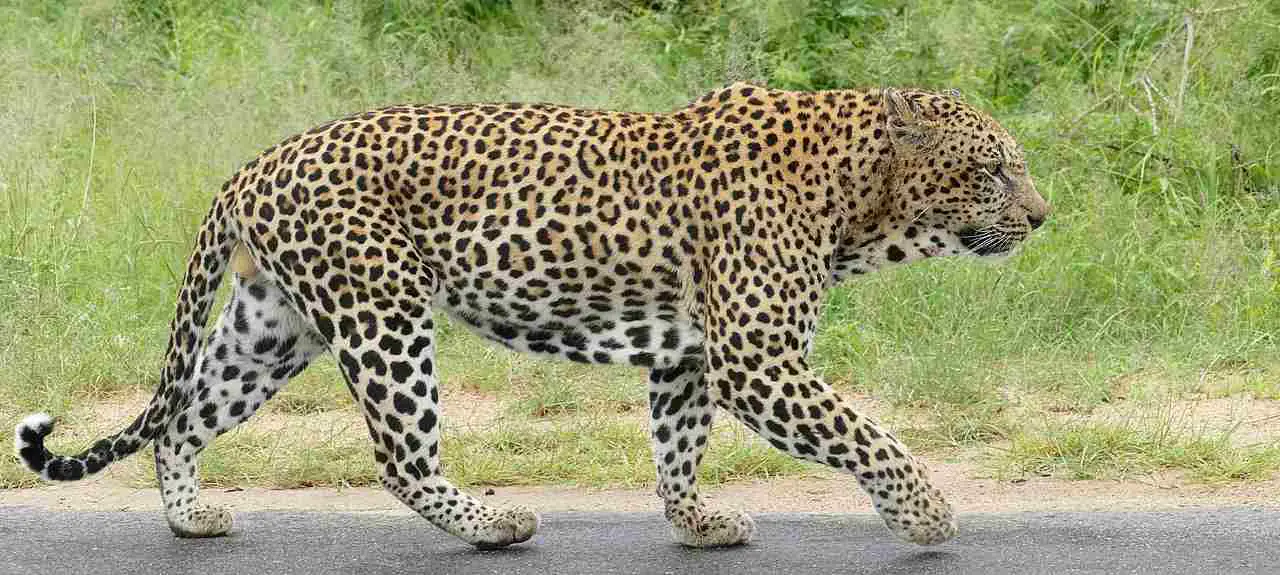
II). Speed and Agility:
– Leopards are known for their exceptional speed and agility, outpacing honey badgers in these aspects. The leopard’s ability to maneuver swiftly adds a tactical advantage, making it difficult for the honey badger to evade or counteract effectively.
III). Predatory Prowess:
– The leopard, being a superior predator, possesses refined hunting skills and predatory features. Its natural instincts and experience as a formidable hunter provide it with the capability to effectively engage and overcome the honey badger.
IV). Aggressiveness of the Honey Badger:
– While honey badgers are notoriously aggressive, their aggression alone may not be sufficient against the leopard’s physical advantages. The leopard’s predatory prowess, combined with its size and agility, could give it the upper hand in the confrontation.
V). Overall Verdict:
– In a one-on-one confrontation, the leopard is likely to emerge victorious over the honey badger. Despite the honey badger’s aggressive nature, the leopard’s superior size, weight, speed, agility, and predatory skills position it as the dominant force in determining the outcome of the physical clash.
*Details of Comparison
| Criteria | Honey Badger | Leopard |
| Taxonomy | Family: Mustelidae | Family: Felidae |
| Appearance | Stocky build, white stripe |
Slender, rosette-patterned coat
|
| Size | Smaller | Larger |
| Weight | Lighter | Heavier |
| Bite Force | 305 PSI | >600 PSI |
| Physical Offensive Advantages | Strong jaws, claws |
Speed, powerful bite
|
| Physical Defensive Advantages | Tough skin, secretion |
Agility, retractable claws
|
| Speed | Up to 20 mph | 36-40 mph |
| Agility | Agile, climbing ability |
Exceptionally agile, adept at climbing
|
| Overall Physical Capacity | Versatile, resilient |
Specialized hunter, powerful physique
|
| Habitat Preference(s) | Adaptable to various environments |
Diverse habitats, e.g., savannas, forests
|
| Tracks | Clawed prints with a distinctive pad |
Paw prints with retractable claw marks and rosette patterns
|
| Lifespan | 7-10 years | 12-17 years |
| Mode of Feeding | Omnivorous, scavenger |
Carnivorous, primarily hunting ungulates
|
| Social Behavior | Generally solitary |
Generally solitary
|
| Mode of Reproduction | Polygamous mating system |
Polygamous mating system
|
| Parental Behavior | Limited parental care |
Maternal care provided until independence
|
| Proximity to Human-Inhabited Areas | Adaptable to human presence |
Adaptable to human settlements, leading to conflicts
|
| Behavior Toward Humans | Elusive, aggressive if provoked |
Generally avoids, may be aggressive if threatened
|
| Danger Posed to Humans | Rarely poses direct threat |
Can be dangerous if threatened or cornered
|
| Associated Precautions | Caution advised in encounters |
Caution advised, especially in the wild
|
| Conservation Status | Least Concern |
Vulnerable or Near Threatened
|
1. Taxonomy:
Honey Badger (Mellivora capensis)
Kingdom: Animalia
Phylum: Chordata
Class: Mammalia
Order: Carnivora
Family: Mustelidae
Genus: Mellivora
Species: capensis
Leopard (Panthera pardus)
Kingdom: Animalia
Phylum: Chordata
Class: Mammalia
Order: Carnivora
Family: Felidae
Genus: Panthera
Species: pardus
2. Appearance:
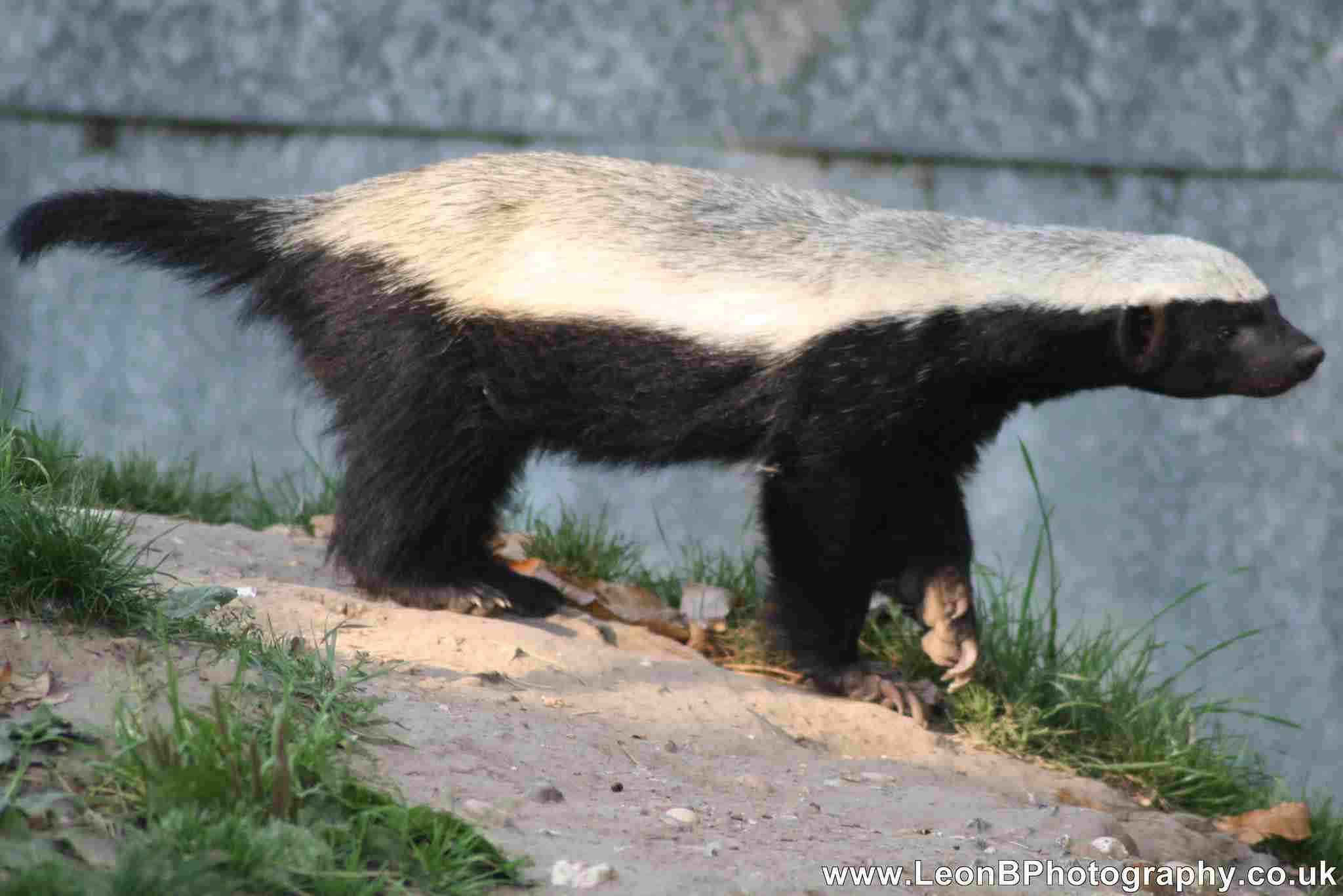
Honey Badger:
Stocky build, about 9 to 11 inches in height.
Thick skin with coarse fur, varying from grey to black.
Distinctive white stripe on the back.
Leopard:
Slender and more elongated body, standing around 28 inches at the shoulder.
Spotted coat with a rosette pattern, providing effective camouflage.
Lithe and agile appearance.
Comparison:
While honey badgers are compact and heavily built, leopards exhibit a sleek and agile physique.
The honey badger’s contrasting coloration serves as a warning to predators, whereas the leopard’s spots aid in stealth during hunting.
Ecological Implications:
The honey badger’s appearance may deter potential threats due to its bold coloration, possibly minimizing confrontations.
The leopard’s spotted coat plays a role in ambushing prey, enhancing its success in hunting.
3. Size:
Honey Badger:
Length: 22 to 30 inches (excluding the tail).
Tail length: 4 to 12 inches.
Leopard:
Length: 3 to 6.25 feet (excluding the tail).
Tail length: 2.6 to 3.5 feet.
Comparison:
Leopards are significantly larger than honey badgers, both in body length and tail length.
The size difference may influence their roles in the ecosystem, with leopards being more formidable predators.
Ecological Implications:
Larger size in leopards suggests a higher position in the food chain, impacting prey populations differently than the smaller honey badger.
4. Weight:
Honey Badger:
Typically 20 to 35 pounds.
Leopard:
Weights ranging from 60 to 200 pounds, with males being larger than females.
Comparison:
Leopards outweigh honey badgers significantly, highlighting their distinct ecological roles and prey preferences.
Ecological Implications:
Leopards, being larger predators, may have a more significant impact on shaping prey populations within their habitats compared to honey badgers.
5. Bite Force:
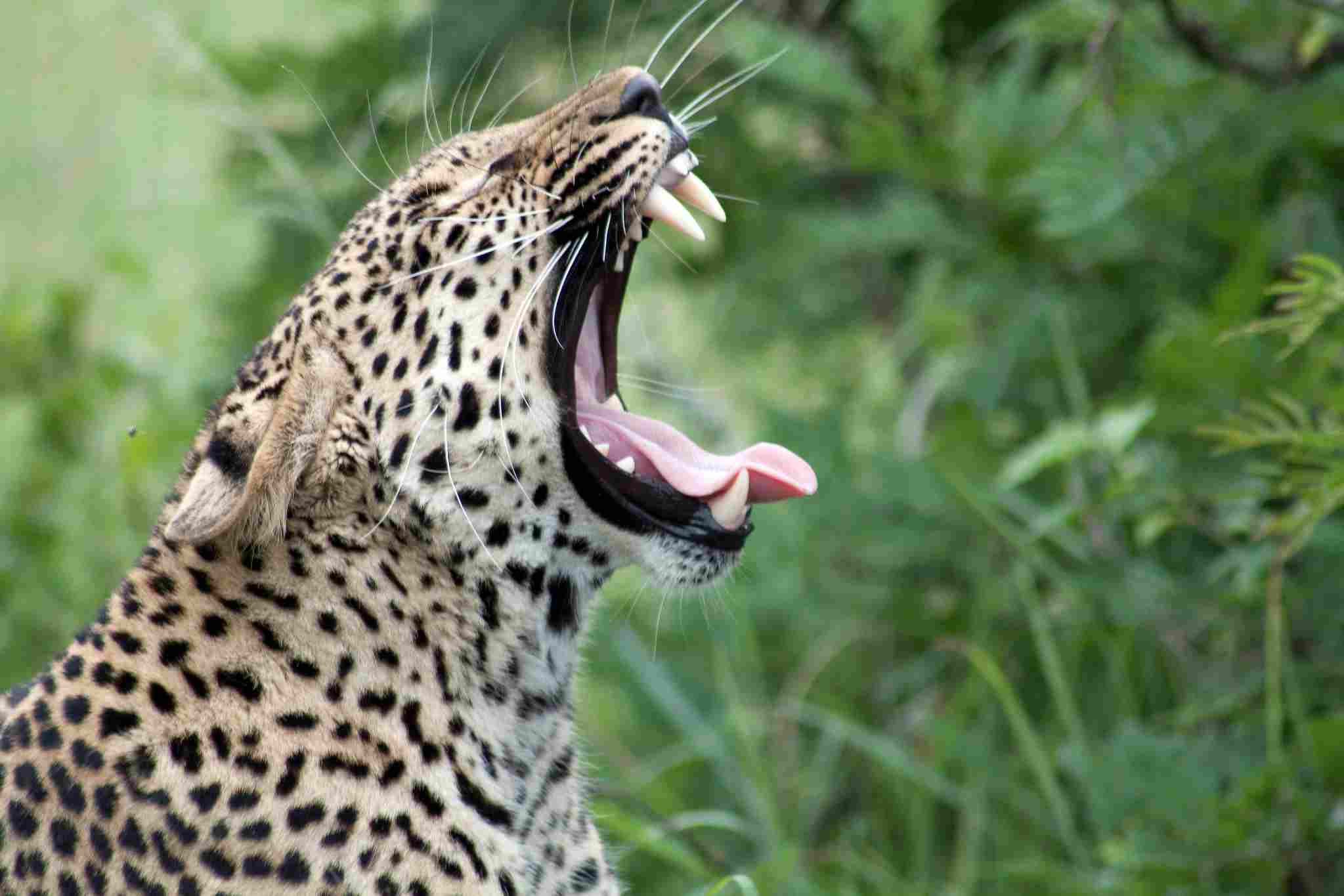
Honey Badger:
Strong jaws with a reported bite force of around 305 PSI.
Leopard:
Powerful jaws with an estimated bite force exceeding 600 PSI.
Comparison:
Leopards possess a considerably stronger bite force compared to honey badgers.
Ecological Implications:
The leopard’s powerful bite is crucial for subduing and killing larger prey, influencing the dynamics of predator-prey relationships in their ecosystem.
6. Physical Offensive Advantages:
Honey Badger:
Sharp claws and powerful jaws.
Tenacious and fearless, capable of taking on larger adversaries.
Leopard:
Exceptional speed and agility.
Powerful bite for efficient prey capture.
Comparison:
Honey badgers rely on a combination of strong jaws and claws, emphasizing their resilience.
Leopards excel in speed and a powerful bite, allowing for strategic hunting maneuvers.
Ecological Implications:
The honey badger’s offensive capabilities contribute to its ability to scavenge and compete for resources.
Leopards’ agility and powerful bites enhance their hunting efficiency, impacting prey populations in their ecosystem.
7. Physical Defensive Advantages:
Honey Badger:
Tough, loose skin provides resistance against bites.
Ability to secrete a foul-smelling substance as a deterrent.
Leopard:
Camouflage and agility aid in evading potential threats.
Sharp retractable claws for defense.
Comparison:
Honey badgers utilize defensive tactics like skin toughness and secretion to deter attackers.
Leopards rely on agility, camouflage, and retractable claws for defense.
Ecological Implications:
These defensive adaptations contribute to the overall survival strategies of each species, influencing their interactions with other predators and potential threats.
8. Speed:
Honey Badger:
Capable of reaching speeds up to 20 mph for short bursts.
Leopard:
Agile and swift, reaching speeds of 36 to 40 mph.
Comparison:
Leopards are significantly faster than honey badgers, reflecting their divergent hunting strategies.
Ecological Implications:
The leopard’s speed is crucial for successful pursuits during hunting, impacting the dynamics of predator-prey relationships in their habitat.
9. Agility:

Honey Badger:
Agile and capable of climbing trees.
Known for their flexibility and ability to twist and turn in tight spaces.
Leopard:
Exceptional agility, adept at climbing trees and navigating varied terrain.
Comparison:
Both honey badgers and leopards display impressive agility, but leopards are known for their exceptional climbing skills.
Ecological Implications:
The agility of both species contributes to their versatility in hunting and navigating diverse landscapes, influencing their roles in their respective ecosystems.
10. Overall Physical Capacity:
Honey Badger:
Adapted for a combination of scavenging and hunting.
Robust build and endurance contribute to its overall physical resilience.
Leopard:
Well-adapted for stalking and ambushing prey.
Powerful physique and athleticism enhance overall hunting capabilities.
Comparison:
The honey badger’s physical capacity enables versatility in feeding habits and resilience in challenging environments.
Leopards are specialized hunters, utilizing their physical prowess for successful predatory endeavors.
Ecological Implications:
Both species’ physical capacities influence their roles in shaping the ecological dynamics of their habitats.
11. Habitat Preference(s):
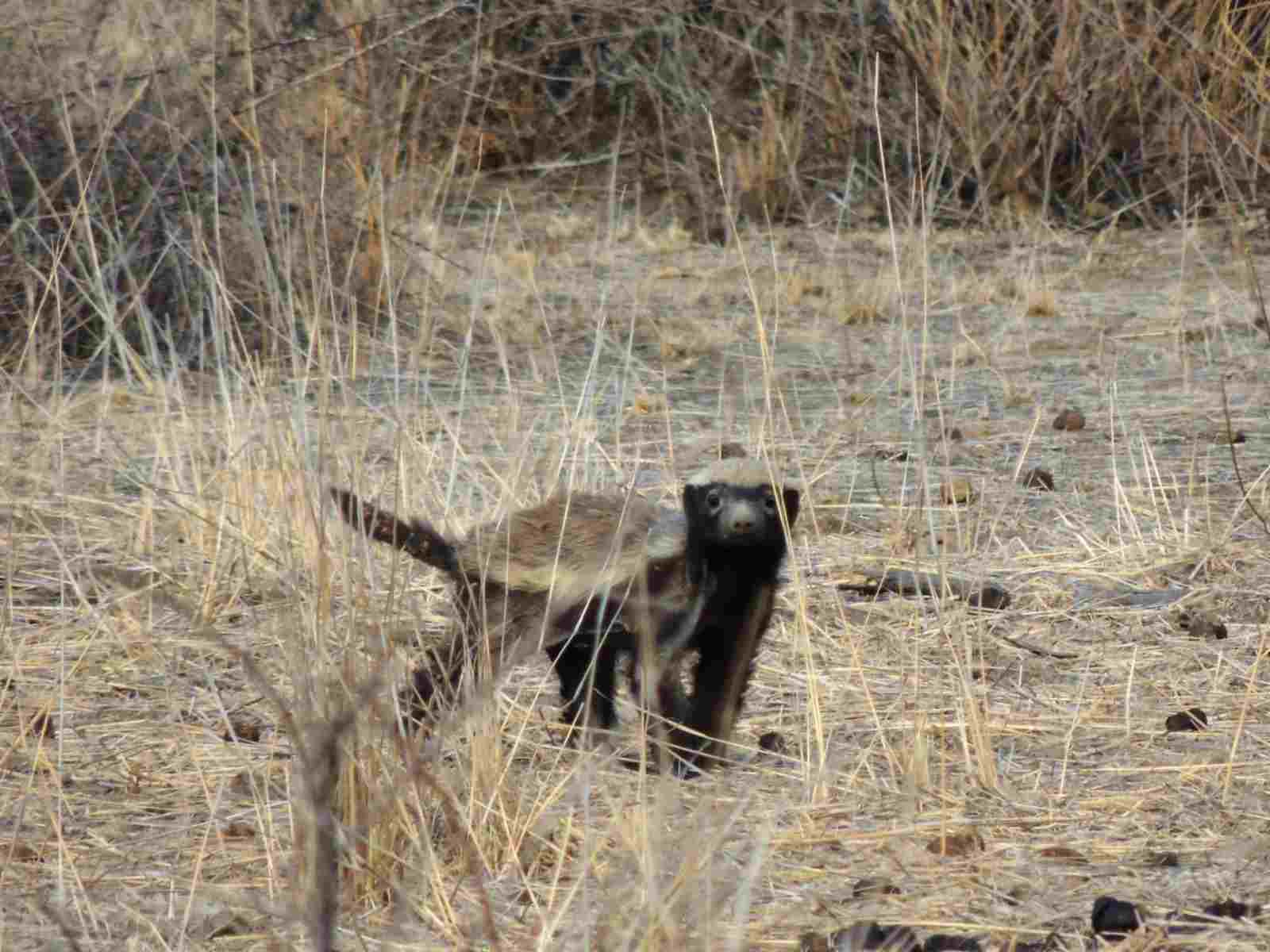
Honey Badger:
Adaptable to various environments, including grasslands, forests, and deserts.
Leopard:
Highly adaptable, found in diverse habitats such as savannas, rainforests, and mountains.
Comparison:
Both honey badgers and leopards exhibit adaptability in terms of habitat preference.
Ecological Implications:
The ability to thrive in different environments contributes to their ecological impact across various ecosystems.
12. Tracks:
Honey Badger:
Clawed tracks with a distinctive pad.
Leopard:
Paw prints with retractable claw marks and distinct rosette patterns.
Comparison:
While both leave distinctive tracks, the leopard’s prints are characterized by rosette patterns, aiding in identification.
Ecological Implications:
Tracking these species in the wild may provide insights into their presence and behaviors, aiding conservation efforts.
13. Lifespan:
Honey Badger:
Typically 7 to 10 years in the wild.
Leopard:
Lifespan ranges from 12 to 17 years in the wild.
Comparison:
Leopards generally have a longer lifespan compared to honey badgers.
Ecological Implications:
Longer lifespans may impact population dynamics and ecological interactions, influencing the overall balance in their respective ecosystems.
14. Mode of Feeding:
Honey Badger:
Omnivorous diet, including small mammals, birds, insects, and even plant matter.
Known for scavenging and consuming a wide range of food.
Leopard:
Carnivorous diet, primarily hunting ungulates like deer and antelope.
Expert ambush predators relying on stealth during hunting.
Comparison:
Honey badgers display a more opportunistic feeding behavior, including scavenging, while leopards are specialized carnivores.
Ecological Implications:
The varied diet of honey badgers may influence competition with other scavengers, impacting local ecosystems differently than the more specialized feeding habits of leopards.
15. Social Behavior:
Honey Badger:
Generally solitary, with occasional interactions during mating or conflicts over territory.
Leopard:
Predominantly solitary, with interactions occurring during mating or between mothers and cubs.
Comparison:
Both species exhibit solitary behavior outside of specific reproductive or maternal contexts.
Ecological Implications:
Solitary behavior may reduce intra-species competition for resources, influencing population dynamics and distribution.
16. Mode of Reproduction:
Honey Badger:
Polygamous mating system, with male-male competition for females during the breeding season.
Leopard:
Polygamous, with mating pairs forming temporarily during the breeding season.
Comparison:
Both honey badgers and leopards exhibit polygamous mating systems.
Ecological Implications:
Reproductive strategies impact population dynamics and genetic diversity within their respective ecosystems.
17. Parental Behavior:
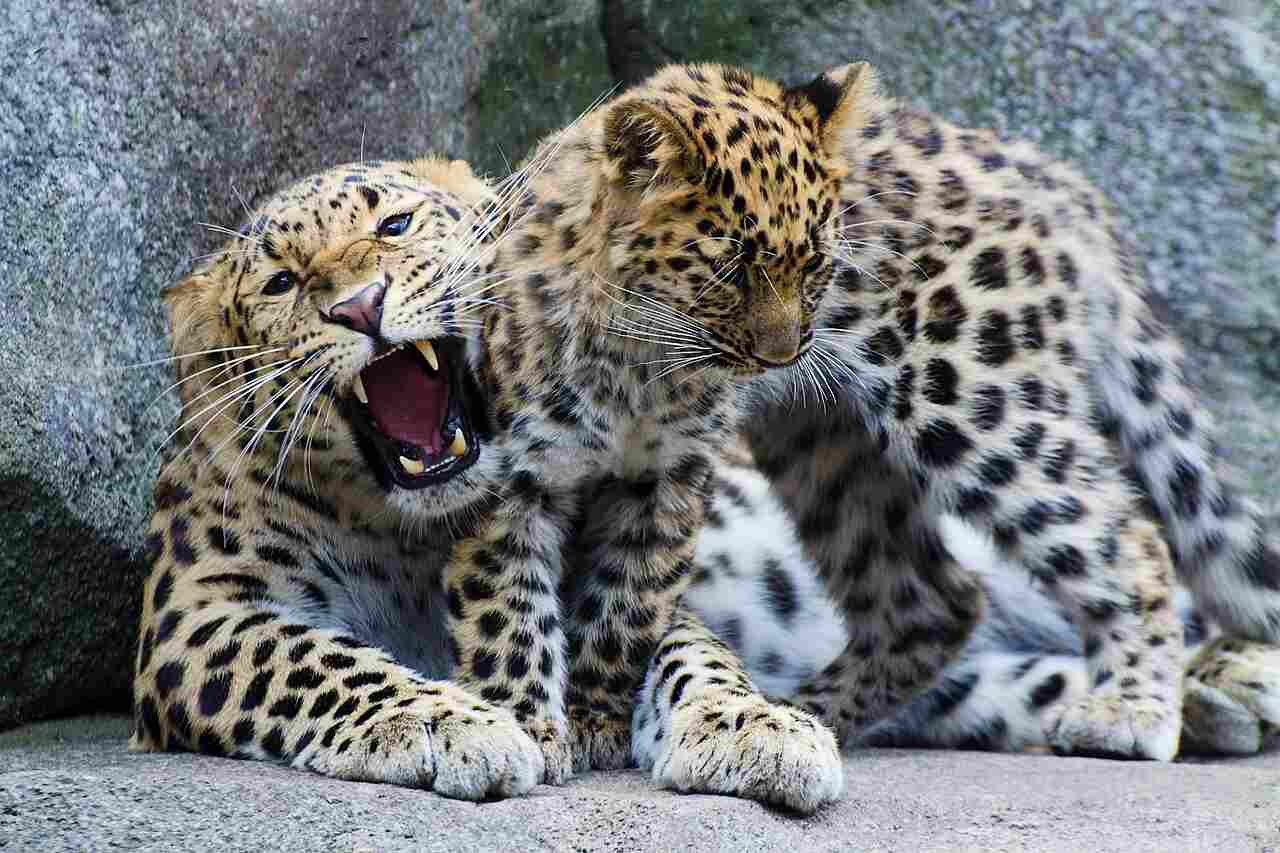
Honey Badger:
Limited parental care, with females raising cubs alone.
Leopard:
Females provide maternal care, including nursing and protection, until the cubs are independent.
Comparison:
Leopards invest more in parental care compared to honey badgers.
Ecological Implications:
Parental care strategies may affect cub survival rates and population dynamics, influencing the overall health of the species in their habitats.
18. Proximity to Human-Inhabited Areas:
Honey Badger:
Adaptable to various environments, including areas with human presence.
May be found near farmlands and settlements.
Leopard:
Can adapt to living in close proximity to human settlements, sometimes leading to human-wildlife conflicts.
Comparison:
Both species can adapt to human-inhabited areas, potentially leading to interactions and conflicts.
Ecological Implications:
Human-wildlife conflicts may impact both species’ survival and contribute to conservation challenges.
19. Behavior Toward Humans:
Honey Badger:
Generally elusive and avoids direct confrontation with humans.
Can be aggressive if provoked.
Leopard:
Usually avoids humans but may display defensive aggression if cornered or threatened.
Comparison:
Both species tend to avoid humans but can be aggressive if they feel threatened.
Ecological Implications:
Human interactions may influence the behavior and survival of these species, affecting their roles in local ecosystems.
20. Danger Posed to Humans:

Honey Badger:
Rarely poses a direct threat to humans, but can be aggressive when cornered.
Leopard:
While generally avoiding humans, leopards can be dangerous if they feel threatened or if they lose their natural fear of humans.
Comparison:
Both species, when agitated or threatened, can pose risks to human safety.
Ecological Implications:
Understanding the potential danger each species poses is crucial for implementing effective conservation and management strategies.
21. Associated Precautions:
Honey Badger:
Caution advised when encountering honey badgers in the wild.
Avoid provoking or cornering them to prevent defensive aggression.
Leopard:
Precautions include avoiding direct contact, especially in the wild.
Implementing measures to minimize human-leopard conflicts, such as secure waste disposal.
Comparison:
Similar precautions apply for both species, emphasizing the importance of coexistence strategies.
Ecological Implications:
Responsible human behavior and precautions contribute to the conservation of these species and mitigate potential conflicts in shared environments.
22. Conservation Status:
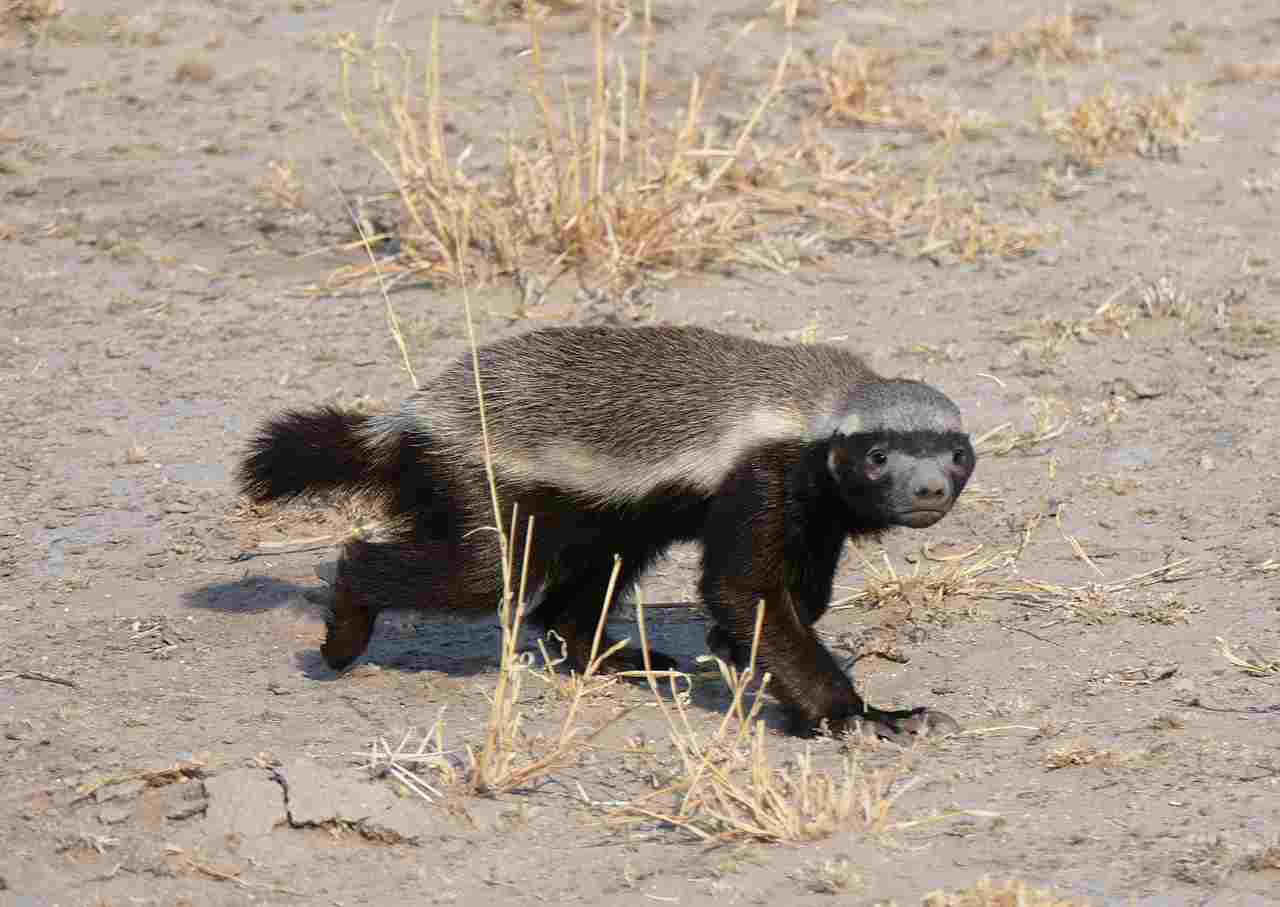
Honey Badger:
Classified as “Least Concern” on the IUCN Red List.
Populations generally stable, with adaptability to various environments contributing to their resilience.
Leopard:
Conservation status varies among leopard subspecies.
Generally, leopards are listed as “Vulnerable” or “Near Threatened” due to habitat loss, poaching, and human-wildlife conflicts.
Comparison:
While honey badgers are currently considered of least concern, leopards face greater conservation challenges, with various subspecies experiencing threats to their populations.
Ecological Implications:
Conservation efforts are essential for maintaining healthy ecosystems, as both species play vital roles in their respective habitats. The contrasting conservation statuses highlight the need for targeted initiatives to protect vulnerable populations.
Summary of Comparison:
I. Similarities:
Both belong to the order Carnivora and exhibit distinct adaptations for predation.
Both species are adaptable to various habitats, including human-inhabited areas.
Both employ polygamous mating systems and exhibit solitary behavior outside of specific reproductive contexts.
Both can be dangerous if provoked, emphasizing the need for caution in encounters.
II. Differences:
Taxonomy:
Honey badgers belong to the family Mustelidae, while leopards belong to Felidae.
Appearance:
Honey badgers have a stocky build with a white stripe, while leopards are slender with a rosette-patterned coat.
Size:
Leopards are significantly larger than honey badgers.
Weight:
Leopards outweigh honey badgers considerably.
Bite Force:
Leopards possess a much stronger bite force than honey badgers.
Physical Offensive Advantages:
Different strategies: honey badgers rely on strong jaws and claws, while leopards use speed and a powerful bite.
Physical Defensive Advantages:
Different defensive tactics: honey badgers have tough skin and secretion, while leopards rely on agility and retractable claws.
Speed:
Leopards are significantly faster than honey badgers.
Agility:
Both species display impressive agility, with leopards known for exceptional climbing skills.
Overall Physical Capacity:
Different physical capacities: honey badgers are versatile, while leopards are specialized hunters.
Habitat Preference(s):
Both species exhibit adaptability to various environments.
Tracks:
Different tracks: honey badgers leave clawed prints, while leopards have paw prints with rosette patterns.
Lifespan:
Leopards generally have a longer lifespan than honey badgers.
Mode of Feeding:
Different feeding habits: honey badgers are omnivores and scavengers, while leopards are carnivores.
Social Behavior:
Both species are predominantly solitary outside of specific contexts.
Mode of Reproduction:
Both exhibit polygamous mating systems.
Parental Behavior:
Different parental care strategies: honey badgers have limited care, while leopards provide maternal care.
Proximity to Human-Inhabited Areas:
Both can adapt to human-inhabited areas.
Behavior Toward Humans:
Both tend to avoid humans but can be aggressive if threatened.
Danger Posed to Humans:
Both can pose risks to human safety when agitated or threatened.
Associated Precautions:
Similar precautions apply for both species.
Conservation Status:
Different conservation statuses: honey badgers are “Least Concern,” while leopards face various threats, leading to “Vulnerable” or “Near Threatened” classifications.
